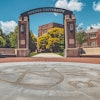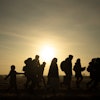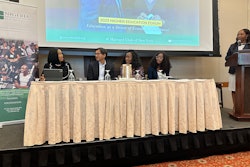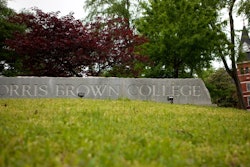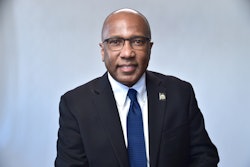In an increasingly globalized and competitive world, the United States must increase its efforts to welcome the best international students and scholars, says a new report issued by NAFSA: Association of International Educators.
The report, “Restoring U.S. Competitiveness for International Students and Scholars,” says the absence of a national strategy to attract international students and scholars is starting to be felt.
“The evidence is anecdotal but the end of growth in numbers of international students, difficulties in attracting top scientists, [and] reluctance to schedule international conferences in the U.S. are the negative effects,” says Victor Johnson, associate executive director for public policy at NAFSA.
The severely restricted access to student visas in a post-Sept. 11 era has sent foreign scientists and students a message that they are not wanted, says Johnson, pointing to the case of an Indian scientist being denied a U.S. visa for a presentation at the University of Florida. Johnson says that incident caused a lot of resentment in the scientific community. Dr. Goverdhan Mehta of the Indian Institute of Science was denied a visa at the U.S. Consulate in Chennai, India, on Feb. 9, creating a major diplomatic crisis before President Bush’s scheduled visit to the country.
Although there have been improvements in visa processing, developments in global education and U.S. policy have diminished America’s image and its ability to attract scholars from around the world, the report says. It goes on to say that the U.S. has been slow to respond to a changing international education landscape.
According to the International Institute of Education’s 2005 Open Doors report, India remains the top sender of students to the United States, with 80,466 students in American colleges and universities. But that number represents a modest increase compared to previous years. India was followed by China with 62,523 students, which had a modest 1 percent increase in enrollment, after experiencing a 5 percent decline the previous year.
“These countries are upgrading their own higher education systems to keep top students home,” says Johnson.
The report recommends coordinating efforts of the U.S. Departments of Homeland Security, State, Commerce and Education.
NAFSA also says the current U.S. immigration system lacks the flexibility to be in touch with current trends in international education. The organization has also mentioned in previous reports that universities and the private sector have equally important roles to play.
“The British have been successful because of a common recruitment policy, but schools are competitive here,” says Johnson. “Universities need to find ways to cooperate for mutual benefits.”
Since the private sector needs a competent and multicultural work force, businesses need to contribute as well.
“But if the government were to take more active leadership, if the president were to articulate policy,” says Johnson, “then it would help stimulate action and everyone would perform better.”
-Shilpa Banerji
| Reader comments on this story: |
| There are currently no reader comments on this story. |
© Copyright 2005 by DiverseEducation.com



